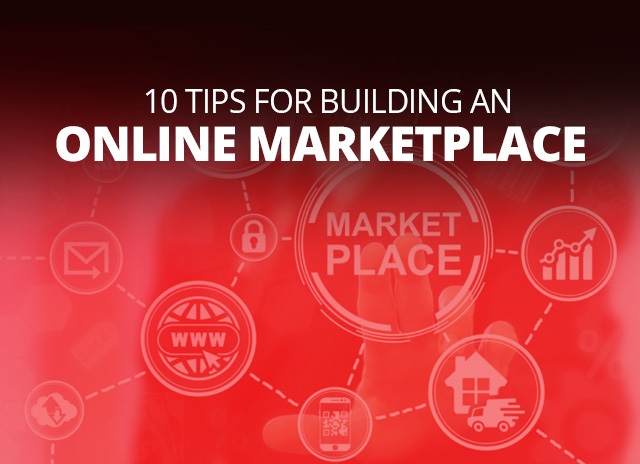Top 5 WordPress Plugins For Social Media Posting
Social media has revolutionized the way users share information online. Research by Statista shows that social media has progressed from having 2.34 billion users in 2016 to 3.96 billion users as of July 2020. It is therefore considered as one of the most powerful tools for modern marketing and branding of a website and needs to be integrated well to generate high traffic. Using the WordPress framework makes the process simpler by offering numerous choices in the form of plugins to share content through the use of social media buttons on the website.
Before we explore the top 5 social media plugins, let us identify the functionalities and benefits of using social media plugins.
- Social sharing button– help in improving the online exposure by users sharing the content from the website through their social media profiles.
- Social icons– these show the website visitors your social media presence and allows them to click the icon to automatically be directed to your profile. It is one of the easiest ways to build followers on social media
- Social logins– allow people to sign in using their social media accounts. This helps in keeping the site secure and minimizes spam. It also makes it easier for the user since they don’t have to create a new username and password to access the website.
- Social feeds– help showcasing social media feeds directly on the website. It adds visuals and gives a sneak preview of what can be expected on the social pages.
- Social comments-boost the conversation in the comments by adding social media comments to the posts. This helps in driving higher engagement and comments.
- Social locking-best content can be restricted with the social locking tool. It can be unlocked by a specific action taken by the website visitor like sharing content or following on social media.
- Automated Posting– using plugins to automate social media posting. For example, sharing older blog posts on Twitter benefits the followers as the content is always being shared.
Top WordPress Plugins for Social Media
- Easy Social Share– Is one of the best free social sharing plugins for WordPress. Simple yet powerful, easy to use this plugin is suitable for beginners as well as experts. Easy social share buttons offer a choice of 30 different default positions such as above/ below content, floating icons, post share bar, etc. and is supported by 50 social media networks. This plugin has been ‘Performance Approved’ by WordPress plugin Wp rocket which highlights how well regarded it is for being optimized and not affecting website performance. Some of the notable features of Easy Social Share are
- Over 55 button style templates offering a choice to the user to make the buttons look exactly as they want.
- Share count displays the share count for individual or overall networks.
- Follow icons to let visitors follow you and the count can be displayed.
- Share count recovery enables the recovery of old share counts in case of switching domains or from HTTP to HTTPS.
- Custom content helps control what content is shared.
- After share action enables a display of message/ offer after content is shared by the visitor.
- A/B testing uses split testing to know which social networks and buttons perform best.
- Social media profiles can be linked using this plugin
- It costs less than $ 20 and yet it offers more features than other WordPress social media plugin
- It provides a simple button to subscribe to an email newsletter.
- Use analytics and metrics to see what content is working best.
- A live chat button can be displayed for Facebook or Skype live chat.
- Social Warfare-Is among the best available social media WordPress plugins due to its simplicity. It does not slow down the website, unlike some other plugin. It is designed to increase shares by adding social sharing icons on the website. The buttons can be placed above/ below content or both, manually with a shortcode or floating share buttons. With the paid version some more options are available. It supports 6 social networks with the free version and 9 with the paid version. Social Warfare helps track the results with UTM parameters. Analytics can be used to see how well the sharing icons are performing to tweak them if necessary. Some of the other notable features are
- Attractive buttons that look great.
- Share counts display total share counts or individual network share counts. Tweet count can be displayed with the paid version.
- Popular posts by share count can be displayed using a widget.
- Share count recovery enables the recovery of old share counts in case of switching domains or from HTTP to HTTPS.
- Minimum social proof offers the option of displaying share counts only after a certain number is reached.
- Share customization controls what content shows up when a user shares content.
- Pinterest specific share image is when a separate image shows up on sharing it on Pinterest.
- Mashshare– A free social media plugin by WordPress, it can be customized for social media and help optimize content. It provides attractive designs for the display of three social media buttons for Facebook, Twitter, and Subscribe. It displays by default the total shares against each of these buttons to give an idea about total shares at a glance to the visitors of the site. These plugins do not have an impact on site speed. The buttons can be placed above/ below content (or both) and can be placed manually with a shortcode. The premium versions allow for positioning of the buttons like a floating sidebar or sticky sidebar. The free version supports Facebook and Twitter while the paid version includes Google +, Pinterest, Reddit, LinkedIn, Whatsapp, and some small networks. Some of the other notable features are
- Social media plugin with add-ons helps choose the features that are required without having to pay full price for features that may not be used.
- The plugin has caching built-in for the fast delivery of the buttons.
- Select and share – let users share specific parts of your text.
- Pageviews are displayed.
- Share count recovery enables the recovery of old share counts in case of switching domains or from HTTP to HTTPS.
- Share count is displayed just like Mashable.
- Shortcodes allow for buttons to be placed anywhere on the website.
- Ultimate Social Share– Is a popular social media plugin that is simple and easy to use. It offers a range of buttons with its premium version. It is active across a huge number of websites with high rating reviews for its aggressive approach for asking for reviews. The free version allows for buttons to be placed at a specific position on the page via a widget, a shortcode, after posts, or via a pop-up. The premium version supports over 100 social media networks with the free version supporting the popular social media networks like Facebook, Instagram, YouTube, LinkedIn, Twitter, and Pinterest. Some of the other notable features are
- Share counts across social media platforms.
- Custom shares help choose the pictures and text to be shared.
- Exclude pages from sharing share icons.
- Share count recovery enables recovery of old share counts in case of switching domains or from HTTP to HTTPS
- Exclusive design styles.
- Add to Any– Is one of the most popular social media share button plugins on WordPress. It is active on over 500,000 sites. It most enviable feature is the number of social networks it supports and that too free. These buttons can be placed above/ below content (or both), vertical and horizontal floating bar, widget, or shortcode. The buttons can also be placed at the bottom of media pages and excerpts. AddToAny button allows the user to choose any network. Some of the other notable features are
- Share counts across networks
- Google Analytics integration- to track share analytics
- AMP support
- Responsive design
- Share buttons help increase traffic to the site.
The website and the social media profile should work together to generate optimal results. Which WordPress social media plugin you choose will depend on what you are looking for. By making sharing of content easy will boost engagement and drive more traffic. The above-mentioned WordPress social media plugins are sure to help you add some interesting buttons to your website.








